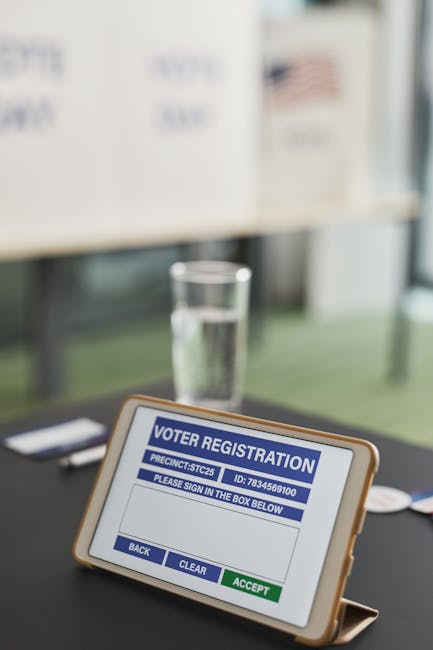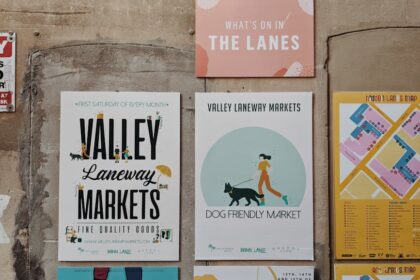Compelling Copywriting for Twitter Ads: Mastering Brevity and Impact
Twitter’s unique ecosystem, defined by its real-time nature, mobile-first consumption, and inherent character limitations, demands a distinct approach to ad copywriting. Unlike platforms that allow for extensive long-form content, Twitter forces advertisers to master the art of conciseness without sacrificing clarity or persuasive power. Effective Twitter ad copy isn’t merely about fitting a message into a limited space; it’s about crafting words that instantly grab attention, convey value, and compel action within a fleeting moment of user attention. Users scroll rapidly, their feeds a constant stream of information. To break through this noise, your ad copy must be exceptionally sharp, relevant, and designed to resonate immediately with the target audience. The challenge lies in condensing complex ideas or product benefits into pithy, digestible snippets that generate curiosity and drive engagement.
Understanding the Twitter Ad Landscape and Its Implications for Copy
Twitter users engage with the platform for real-time updates, news, trending topics, and direct interaction. This dictates a fast-paced, often conversational, and highly dynamic environment. Your ad copy must mirror this energy.
- Ephemeral Nature of Tweets: A tweet’s lifespan is remarkably short. This necessitates ad copy that delivers its core message upfront, ensuring that even a quick glance conveys the primary value proposition. There’s no time for lengthy build-ups; the hook must be immediate.
- Mobile-First Consumption: The vast majority of Twitter users access the platform via mobile devices. This impacts how copy is read and perceived. Shorter sentences, clear formatting, and judicious use of emojis or line breaks improve readability on smaller screens. Long blocks of text are difficult to parse and often skipped.
- Character Limitations and Their Impact: The extended 280-character limit, while more generous than the original 140, still imposes significant constraints. This forces copywriters to be highly selective with every word, focusing on powerful verbs, concise phrasing, and eliminating superfluous language. Every character must earn its place. This constraint cultivates creativity, pushing copywriters to find innovative ways to convey complex ideas simply. It means prioritizing the most impactful benefits, the clearest calls to action, and the most compelling hooks. It also encourages the strategic use of links and visuals to offload information that cannot be contained within the character limit.
- The “Real-Time” Aspect: Twitter thrives on immediacy. Ad copy that leverages current events, trending topics (where relevant and authentic), or speaks to timely needs often performs exceptionally well. This requires agility in copywriting, allowing for quick adjustments to capitalize on fleeting moments of public interest or specific cultural conversations. Copy should feel current, not evergreen to the point of being stale.
Core Principles of Twitter Ad Copywriting
At the heart of compelling Twitter ad copy lies a combination of strategic thinking and linguistic precision.
- Brevity and Impact: This is the golden rule. Every word must count. Eliminate jargon, passive voice, and unnecessary adverbs. Focus on strong nouns and active verbs. The goal is to convey maximum meaning with minimum characters. Think of your ad as a billboard; it needs to be understood in seconds.
- Clarity and Directness: Ambiguity is the enemy of conversion. Your message must be crystal clear. What are you offering? Who is it for? What problem does it solve? What should the user do next? Answer these questions directly and concisely. Users should not have to infer your meaning.
- Value Proposition First: Lead with the benefit, not the feature. Users care about what your product or service can do for them. How will it make their life easier, better, or more enjoyable? State this compelling benefit immediately to capture attention. For example, instead of “Our new software has X feature,” try “Save hours weekly with our new software.”
- Audience Understanding: Deep knowledge of your target audience is paramount. What are their pain points, desires, language, and interests? Tailor your copy to resonate specifically with them. Use language they understand and relate to. An ad for Gen Z will sound different from one for B2B executives.
- Brand Voice Consistency: While adapting to Twitter’s unique style, maintain your brand’s established voice and tone. Is your brand playful, authoritative, empathetic, or innovative? Ensure your ad copy reflects this, building brand recognition and trust across all touchpoints. Inconsistency can confuse your audience and dilute your brand identity.
Crafting Irresistible Headlines and First Lines
The first few words of your Twitter ad are your most critical asset. They determine whether a user continues reading or scrolls past.
- Hooking the Scroll: Your opening must immediately capture attention. Use a question, a bold statement, a surprising fact, or a direct benefit. The goal is to interrupt the user’s scrolling pattern.
- Example: “Tired of endless meetings?” (Question hook)
- Example: “Unlock 2X your productivity, guaranteed.” (Benefit hook)
- Example: “The secret to viral content revealed.” (Intrigue hook)
- Problem/Solution Framing: Start by articulating a common pain point your target audience experiences, then immediately present your product/service as the solution. This creates immediate relevance.
- Example: “Struggling with lead generation? Our AI tool automates it.”
- Benefit-Driven Headlines: Focus on what the user gains. Emphasize outcomes and transformations rather than just features.
- Example: “Transform your fitness journey in 30 days.”
- Example: “Get glowing skin overnight with this serum.”
- Question Headlines: Pose a question that prompts self-reflection or curiosity. This encourages the user to mentally engage with your ad.
- Example: “Is your website losing customers?”
- Example: “Ready to escape the 9-5 grind?”
- Urgency and Scarcity: Introduce elements of urgency or scarcity to prompt immediate action. Words like “limited-time,” “now,” “exclusive,” or “don’t miss out” can be highly effective.
- Example: “Last chance: 50% off ends tonight!”
- Example: “Only 10 spots left – claim yours!”
The Body of the Tweet (within limits)
Once you’ve hooked their attention, the remaining characters must quickly elaborate on the value and guide the user towards your call to action.
- Elaborating on Benefits (Concise): Expand briefly on the key benefits mentioned in your hook. Use bullet points or short, punchy sentences if character limits allow. Focus on the most compelling 1-2 benefits.
- Original: “Struggling with lead generation? Our AI tool automates it.”
- Elaboration: “Generate qualified leads instantly. Reduce acquisition costs. Boost sales pipeline.”
- Using Emojis Strategically: Emojis can convey emotion, break up text, and draw the eye to key information. Use them sparingly and purposefully to enhance your message, not distract from it. They can replace words, saving characters, or add visual flair.
- Example: “🚀 Launch your startup idea faster! Get our guide. ✨”
- Incorporating Social Proof and Credibility: If possible, weave in elements of social proof like “Join 10,000 satisfied users,” “Rated 5 stars,” or “Featured in Forbes.” This builds trust and encourages action.
- Example: “Trusted by over 500 businesses. See why:”
- Telling Micro-Stories: Even within character limits, you can imply a narrative arc. Present a problem, a quick solution, and a desirable outcome. This humanizes your ad and makes it more relatable.
- Example: “Tired of messy notes? ✍️ Our app organizes everything effortlessly. Focus on what matters. 👇”
- Addressing Pain Points Directly: Reiterate specific pain points your audience experiences and position your offering as the direct antidote. This demonstrates empathy and understanding.
- Example: “Wasting hours on spreadsheets? Automate your data entry and reclaim your day.”
The Power of Hashtags in Twitter Ads
Hashtags are more than just keywords; they are pathways to discovery, community, and campaign organization on Twitter. Their strategic use in ads can significantly amplify reach and relevance.
- Discovery vs. Branding Hashtags:
- Discovery Hashtags: Use relevant, popular (but not overly saturated) hashtags to increase visibility beyond your immediate followers. These are keywords users might be searching for or following. Example: #DigitalMarketing, #SaaS, #FitnessTips.
- Branding Hashtags: Create unique hashtags for your campaigns, brand events, or ongoing conversations. These help track engagement and build brand recognition. Example: #YourBrandLaunch, #SummerSale2024.
- Researching Trending Hashtags: Leverage Twitter’s “Trends for you” or third-party tools to identify what’s currently popular. Integrate relevant trending hashtags ONLY if they genuinely align with your ad copy and brand, avoiding forced associations that can appear disingenuous.
- Creating Campaign-Specific Hashtags: For larger campaigns, a unique hashtag helps users follow the conversation, share their experiences, and creates a sense of community. This is excellent for events, contests, or product launches.
- Optimal Number of Hashtags: While Twitter allows multiple, best practice suggests 1-3 highly relevant hashtags for ads. Too many can look spammy and dilute your message. Focus on quality over quantity.
- Placement and Relevance: Place hashtags logically within your copy or at the end. Ensure they are directly relevant to your ad’s content and target audience. Irrelevant hashtags can lead to poor engagement and wasted ad spend.
Compelling Calls to Action (CTAs) for Twitter
A strong CTA is the lynchpin of any successful ad. Without a clear directive, even the most compelling copy falls flat.
- Clarity and Specificity: Tell users exactly what you want them to do. Vague CTAs like “Learn more” are less effective than specific ones.
- Weak: Learn more.
- Strong: Download the Free Guide. | Shop Now for 20% Off. | Sign Up for Early Access.
- Action-Oriented Verbs: Use powerful verbs that prompt immediate action.
- Examples: Get, Shop, Download, Register, Subscribe, Discover, Start, Claim, Join, Watch, Book.
- Sense of Urgency: Reinforce urgency to encourage prompt action. Combine with scarcity for maximum effect.
- Example: “Shop now, sale ends midnight!”
- Example: “Claim your discount before it’s gone!”
- Button CTAs vs. In-Copy CTAs: Twitter Ad formats often include dedicated CTA buttons (e.g., “Learn More,” “Shop Now”). Align your in-copy CTA text with the button text for consistency and clarity. If no button is available or desirable, ensure your in-copy CTA is prominent and clear.
- Alignment with Landing Pages: Your CTA must promise exactly what the user will find on the landing page. Misleading CTAs lead to high bounce rates and wasted ad spend. Ensure the user experience from ad click to landing page is seamless and consistent. The transition should be intuitive and fulfill the expectation set by the ad copy.
Leveraging Visuals and Media in Twitter Ad Copy
On a visually driven platform like Twitter, your ad copy works hand-in-hand with your creative. The synergy between text and image/video is crucial for impact.
- Text-Image Synergy: Your copy should complement, not repeat, the visual. If your image shows a product, your copy should highlight a key benefit. If your video tells a story, your copy should provide context or a compelling hook to encourage watching. The visual grabs attention; the copy provides the persuasive argument and directs action.
- Video Ad Copy Considerations:
- Hook First: The first few seconds of your video are vital, but so is the text that accompanies it. Your copy should pique curiosity and give a reason to watch.
- Summarize/Reinforce: Briefly summarize the video’s key message or reinforce its call to action.
- Concise and Engaging: Even with video, your text copy needs to be short and impactful.
- GIFs and Their Impact: GIFs can convey emotion, humor, or illustrate a quick process. Your copy should integrate seamlessly with the GIF’s message, perhaps adding a call to action or a provocative question. They are excellent for breaking monotony and adding dynamism.
- Infographics and Data Visualization: If your ad features an infographic, your copy should highlight the most compelling data point or key takeaway, encouraging users to click for the full visual.
- Alt Text for Accessibility and SEO: While not directly part of the visible copy, providing descriptive alt text for images in your Twitter ads improves accessibility for visually impaired users and can subtly aid in SEO by providing context to search engines about your ad’s content. Always consider accessibility as part of high-quality ad creation.
Twitter Ad Formats and Copy Considerations
Twitter offers various ad formats, each with specific character limits and creative requirements that influence copywriting strategy.
- Promoted Tweets: These are standard tweets that you pay to promote. They appear in users’ timelines and are subject to the 280-character limit. Copy must be self-contained and immediately persuasive. This is the most common format.
- Promoted Accounts: Designed to gain followers. The copy should focus on the value of following your account – what content will they receive, what benefits will they gain?
- Example: “Follow us for daily marketing tips & exclusive insights! 👇”
- Promoted Trends: Appear in the “Trends for you” section. The copy here is typically very short (e.g., a few words or a branded hashtag), relying heavily on the trend’s visibility to drive engagement. The accompanying creative and landing page become crucial for conveying the full message.
- Website Cards: These include an image or video, a headline, and a website URL, usually with a clear CTA button. The copy should complement the headline and visual, providing a brief, compelling reason to click through. The headline on the card is crucial here, as it’s often more prominent than the tweet text itself.
- App Cards: Similar to Website Cards, but optimized for app installs. The copy should highlight key app benefits, address a user need, and prompt installation. The headline on the card (e.g., App Name) and app store rating are key.
- Video Ads: Can be standalone or part of Website/App Cards. The copy provides context, a hook, and a CTA for the video. Remember, many users watch video without sound initially, so the copy (and video itself) must make sense even on mute.
- Image Ads: A single image accompanies your tweet copy. The copy and image must work in tandem to deliver the message. The image grabs attention, the copy persuades.
- Carousel Ads: Allows for multiple images/videos, each with its own headline and URL. Copy can introduce the carousel’s theme and encourage users to swipe through to discover more. Each card’s headline and description offer additional opportunities for targeted copy.
- Moment Ads: (Less common/evolving format) If used, the copy helps introduce the curated collection of tweets, setting the narrative or theme of the Moment.
Audience-Centric Copywriting for Twitter
Effective copywriting is always about understanding your audience. On Twitter, this means tailoring your message to specific segments and their unique behaviors on the platform.
- Persona Development for Twitter: Go beyond basic demographics. What are their interests (as indicated by their follows, hashtags, and tweets)? What content do they engage with most? Are they early adopters, bargain hunters, or information seekers? Develop specific Twitter personas to guide your copy.
- Segmenting Audiences and Tailoring Messages: Twitter’s targeting capabilities (followers of specific accounts, interests, keywords, demographics) allow for highly granular segmentation. Craft unique copy for each segment.
- Example: An ad for gamers will use different language and references than an ad for small business owners, even if the underlying product (e.g., productivity software) is the same.
- Language and Tone Adjustments: The tone should match the audience and the content. Is it casual, formal, humorous, inspiring, or educational? Use slang or professional jargon appropriately, only if it resonates with your target.
- Addressing Different Stages of the Funnel:
- Awareness: Copy focuses on pain points, broad benefits, or intriguing questions to capture attention. Example: “Discover a smarter way to work.”
- Consideration: Copy delves slightly deeper into specific features, unique selling propositions, or provides educational content (e.g., “Download our guide”). Example: “See how [Product] tackles your toughest challenges.”
- Conversion: Copy is direct, action-oriented, and includes strong CTAs, often with urgency or scarcity. Example: “Claim your 20% off now!”
A/B Testing and Optimization Strategies for Twitter Ad Copy
Optimization is not a one-time task but an ongoing process. A/B testing your ad copy is essential to understand what resonates best with your audience and drives the desired outcomes.
- Hypothesis Generation: Before you test, form a hypothesis. “I believe changing the CTA from ‘Learn More’ to ‘Get Your Free Trial’ will increase click-through rates by 15%.”
- Testing Headlines, CTAs, Value Propositions: These are often the highest-impact elements to test.
- Headlines/First Lines: Test different hooks (question vs. benefit vs. urgency).
- CTAs: Test different verbs, levels of specificity, and urgency.
- Value Propositions: Test highlighting different benefits of your product/service.
- Emojis: Test inclusion vs. exclusion, or different types/placement of emojis.
- Hashtags: Test different numbers, types, or placements of hashtags.
- Monitoring Key Metrics: Track performance using Twitter Analytics.
- Click-Through Rate (CTR): Indicates how well your copy compels users to click.
- Engagement Rate: Measures likes, retweets, replies. Good for brand awareness campaigns.
- Conversions: The ultimate metric, showing if your copy leads to sales, sign-ups, or downloads.
- Cost Per Result (CPR): How efficient your copy is at driving the desired action.
- Iterative Improvement: Don’t just run one test and stop. Continuously test, learn, and refine your copy based on performance data. Even small improvements can significantly impact overall campaign ROI. What works for one campaign might not work for another; context is key.
- Twitter Analytics for Insights: Dive deep into your campaign data. Identify which copy variations performed best for specific audience segments, at certain times of day, or with particular visuals. This data is invaluable for informing future copywriting decisions. Look at impression share, reach, frequency, and audience demographics of those who engage.
Advanced Copywriting Tactics for Twitter Ads
Beyond the basics, several advanced psychological principles and creative approaches can elevate your Twitter ad copy.
- Scarcity and Urgency:
- Scarcity: Imply limited availability of a product, offer, or opportunity. “Limited stock,” “Only X left,” “Exclusive access for the first 100.”
- Urgency: Emphasize time sensitivity. “Ends tonight,” “Don’t miss out,” “Act now.”
- Combine them for maximum effect: “Last chance! Only 5 spots left for our exclusive webinar, sign up by midnight.”
- Social Proof and Authority:
- Testimonials/Quotes: “See why [Company] raves about us.” (If character limit allows for a brief snippet or implied reference).
- Numbers: “Join 50,000+ happy customers.”
- Expert Endorsements: “Recommended by industry leaders.”
- Media Mentions: “As seen on [Major Publication].”
- Emotional Triggers: Tap into core human emotions.
- Fear (of missing out – FOMO): “Don’t get left behind – upgrade your skills today.”
- Joy/Aspiration: “Imagine achieving X with ease.” “Unlock your full potential.”
- Surprise/Curiosity: “You won’t believe what our new feature can do.”
- Trust/Security: “Your data is safe with us. Learn how.”
- Storytelling within Character Limits: Even a few lines can hint at a narrative. Problem → Journey → Solution.
- Example: “Stuck in a creative rut? 😔 Our AI writing assistant sparked new ideas in minutes! ✨ Rediscover your flow.”
- Humor and Brand Personality (When Appropriate): If it aligns with your brand voice and audience, humor can make your ad memorable and shareable. However, be cautious; humor can be subjective and potentially alienate some segments.
- User-Generated Content (UGC) Integration: If you have permission, incorporating snippets of positive customer tweets or reviews directly into your ad copy (or featuring them in visuals) provides authentic social proof. This is highly effective as it feels less like an advertisement and more like a genuine recommendation.
- Example: “Our users are saying: ‘This app changed everything!’ See why they love it 👇”
Common Pitfalls and How to Avoid Them
Even experienced copywriters can fall into traps when writing for Twitter Ads. Awareness of these common mistakes can save significant ad spend and improve campaign performance.
- Over-Promotion: Constantly pushing sales or product features without providing value or engaging content can lead to ad fatigue and user disinterest. Balance promotional tweets with helpful, informative, or entertaining content, even within paid campaigns.
- Ignoring Character Limits: Attempting to cram too much information into a tweet results in dense, unreadable copy that is often truncated. Respect the limit and focus on the single most important message. Use links to external content for details.
- Generic Copy: Bland, uninspired copy that could apply to any product or service fails to stand out. Be specific, unique, and highlight what makes your offering different. Avoid corporate jargon that doesn’t resonate with a human audience.
- Mismatched Visuals/Copy: The text and accompanying image/video must tell a cohesive story. If your copy promotes a discount but your visual shows a full-price product, it creates confusion. Consistency across all ad elements is paramount.
- Lack of Clear CTA: An ad without a clear call to action leaves users wondering what to do next, leading to missed opportunities. Every ad needs a specific, explicit instruction.
- Ignoring Mobile Experience: What looks good on a desktop might be messy on a small mobile screen. Preview your ads on mobile devices. Use shorter paragraphs, bullet points, and well-placed emojis to improve readability on the go.
- Neglecting Hashtag Strategy: Using too many hashtags, irrelevant hashtags, or no hashtags at all can hamper discoverability and targeting. A thoughtful hashtag strategy is crucial.
- Inconsistent Brand Voice: Flipping between tones or personalities across different ads or campaigns can confuse your audience and dilute your brand identity. Maintain a consistent voice that aligns with your overall brand messaging.
- No A/B Testing: Launching an ad without a plan for testing different copy variations is a missed opportunity for optimization. Always test, learn, and iterate to improve performance.
- Forgetting the Audience: Writing copy that you think is good, rather than copy that resonates with your specific target audience’s needs, language, and interests, is a recipe for failure. Always write for them.
- Being Too Broad: Trying to appeal to everyone usually means appealing to no one. Be specific about who your ad is for and what problem it solves for them.
- Lack of Urgency (When Appropriate): For certain offers (sales, events), failing to incorporate urgency means users will postpone action, often forgetting about your ad entirely.
Ethical Considerations and Transparency
In an increasingly skeptical digital landscape, ethical copywriting fosters trust and long-term brand loyalty. Transparency is key, especially on Twitter where information spreads rapidly.
- Honesty in Claims: All claims made in your ad copy must be truthful and verifiable. Avoid hyperbole or misleading statements that cannot be substantiated. False advertising not only erodes trust but can also lead to legal repercussions and negative public relations.
- Disclosing Sponsored Content: Twitter automatically labels promoted tweets, but it’s good practice to ensure your copy doesn’t try to hide its promotional nature. Authenticity is valued by users. Don’t try to trick users into thinking it’s organic content if it’s not.
- Data Privacy and User Trust: If your ad involves collecting user data or refers to personalization, ensure your copy respects privacy and subtly reassures users about data handling. While not directly part of the ad copy, the underlying principles of data privacy should inform your overall advertising approach.
- Avoiding Clickbait Without Value: While hooks are essential, clickbait that promises much but delivers little on the landing page is detrimental. It leads to high bounce rates, negative user experience, and can harm your ad account’s reputation. Your ad copy sets an expectation; your landing page must fulfill it.
- Respectful Language: Ensure your copy is inclusive and respectful, avoiding offensive language, stereotypes, or anything that could be misinterpreted negatively by diverse audiences. Twitter is a global platform, and cultural sensitivities must be considered.
- Clear Opt-Out Mechanisms (where applicable): If your ad is part of a subscription or recurring service, ensure your copy (and the linked landing page) makes it clear how users can manage or cancel their subscriptions. Transparency in this regard builds consumer trust.
Future Trends in Twitter Ad Copywriting
The digital advertising landscape is constantly evolving, and Twitter is no exception. Staying ahead of trends ensures your copywriting remains relevant and effective.
- AI-Powered Copy Generation and Optimization: AI tools are becoming increasingly sophisticated at generating ad copy variations, analyzing performance data, and even suggesting improvements. While AI can’t fully replace human creativity and strategic insight, it will become an indispensable assistant for rapid ideation, A/B testing, and identifying high-performing linguistic patterns. Copywriters will leverage AI to scale their efforts and fine-tune their messaging with data-driven precision, focusing their human ingenuity on strategic nuance and creative breakthroughs.
- Increased Personalization and Dynamic Copy: As data collection and audience segmentation become more granular, expect even greater personalization in ad copy. Dynamic copy that automatically adjusts based on user demographics, past behavior, or even real-time context (like weather or location) will become more prevalent. This means copywriters will need to think in terms of flexible copy frameworks that can adapt to various inputs while maintaining core messaging.
- Video-First Strategies and Multimodal Storytelling: While text remains foundational, video continues to dominate attention. Ad copy will increasingly serve as a concise narrative hook or a persuasive voice-over script for video content. Copywriters will need to master brevity not just for tweets, but for video titles, descriptions, and accompanying text that complement a moving visual story. The synergy between spoken word, visuals, and accompanying text will be crucial.
- Interactive Ad Formats and Gamification: Twitter (and social media in general) is experimenting with more interactive ad formats, such as polls, quizzes, and even mini-games within the ad unit itself. Copywriting for these formats will need to be highly engaging, prompting participation and leading users through an interactive experience, often with a clear incentive.
- Ephemeral Content Integration: As more content becomes temporary (like Stories or Fleets, if they were still active in the same way, or similar future formats), copy for ads in these spaces needs to be even more immediate, concise, and perhaps less polished, embracing the raw, in-the-moment feel of the format.
- Voice Search Optimization (Longer-Term): While not directly applicable to tweet copy now, as voice interfaces grow, the way people search and discover information could influence how brands phrase their offerings online, potentially leading to more natural, conversational ad copy that mimics spoken language.
- Focus on Authenticity and Value: Users are increasingly skeptical of overt advertising. Future ad copy will lean heavily into authenticity, demonstrating genuine value, solving real problems, and building community rather than just pushing products. This means more conversational, less “salesy” language, and a greater emphasis on social proof and user-generated content in the copy itself.
- Micro-Community Targeting: As users gravitate towards niche communities and interest groups on Twitter (e.g., through Lists, specific hashtags, or Spaces), ad copy will need to be hyper-targeted to the language, values, and inside jokes of these smaller, highly engaged groups. This requires deep cultural understanding beyond broad demographics.
- Accessibility and Inclusivity by Default: Future trends will see accessible and inclusive language not just as a best practice, but as a foundational requirement. Copywriters will inherently craft messages that are easy to understand, culturally sensitive, and readable by assistive technologies, ensuring wider reach and deeper connection.
Mastering compelling copywriting for Twitter Ads is an ongoing journey that requires adaptability, creativity, and a data-driven mindset. By focusing on brevity, clarity, audience understanding, and continuous optimization, advertisers can craft powerful messages that not only stand out in a fast-paced feed but also drive tangible results for their campaigns. The future of Twitter ad copywriting lies in leveraging technology while doubling down on genuine human connection and value delivery, all within the constraints of impactful, concise communication.










